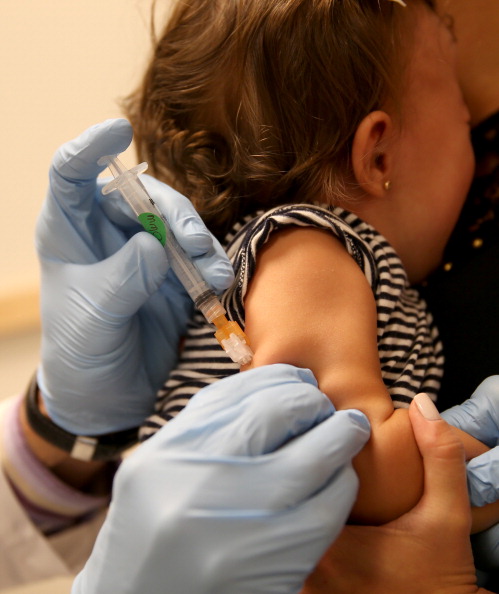
On the bright side, the vast majority of kindergarten-age children in the United States have received vaccinations against preventable diseases. But, there are locations with sizeable numbers of unprotected children, which is a threat to public health, according to a study by the U.S. Centers for Disease Control and Prevention.
Vaccination rates vary nationwide, however, with at least one state reporting over 6 percent of parents seeking exemptions, the study found. Only 1.7 percent of kindergartners were exempted from vaccinations in 2014, according to the study. Mississippi had the lowest rates of vaccine exemptions with a median of 0.1%, while Idaho had the highest rate at 6.5%.
"Pockets of children who miss vaccinations exist in our communities and they leave these communities vulnerable to outbreaks of vaccine-preventable diseases," Dr. Anne Schuchat, director of the CDC's National Center for Immunization and Respiratory Diseases, told reporters in a news briefing. High vaccination rates provide herd immunity, preventing the spread of a virus to individuals too young or too sick to be vaccinated.
All states require children to receive vaccinations before they can be enrolled in school, but many allow parents to choose not to vaccinate for religious or philosophical reasons. All states allow exemptions for children who have a valid medical reason not to be vaccinated. Only Mississippi and West Virginia do not allow a religious exemption. Many states are tightening the rules on vaccination exemptions after a measles outbreak at Disneyland in Anaheim sickened more than 100 people earlier this year.
Because the vaccination rate against measles in the United States is 94% among kindergarten-age children, the Disney outbreak was less of a problem than it became in Canada, Schuchat said. There were more than 100 measles cases from the Disney exposure in one province in Canada "because of a big pocket of undervaccinated people."
According to the report, which included data on 45 states that met reporting requirements and the District of Columbia, the median rate of kindergartners with any exemption was less than 1 percent in six states and greater than 4 percent in 11 states.
States are increasingly are putting the information about vaccination rates online, Schuchat said. Parents can use the information to check on vaccination coverage in their own communities or schools, depending on how the state reports the data, she said.
